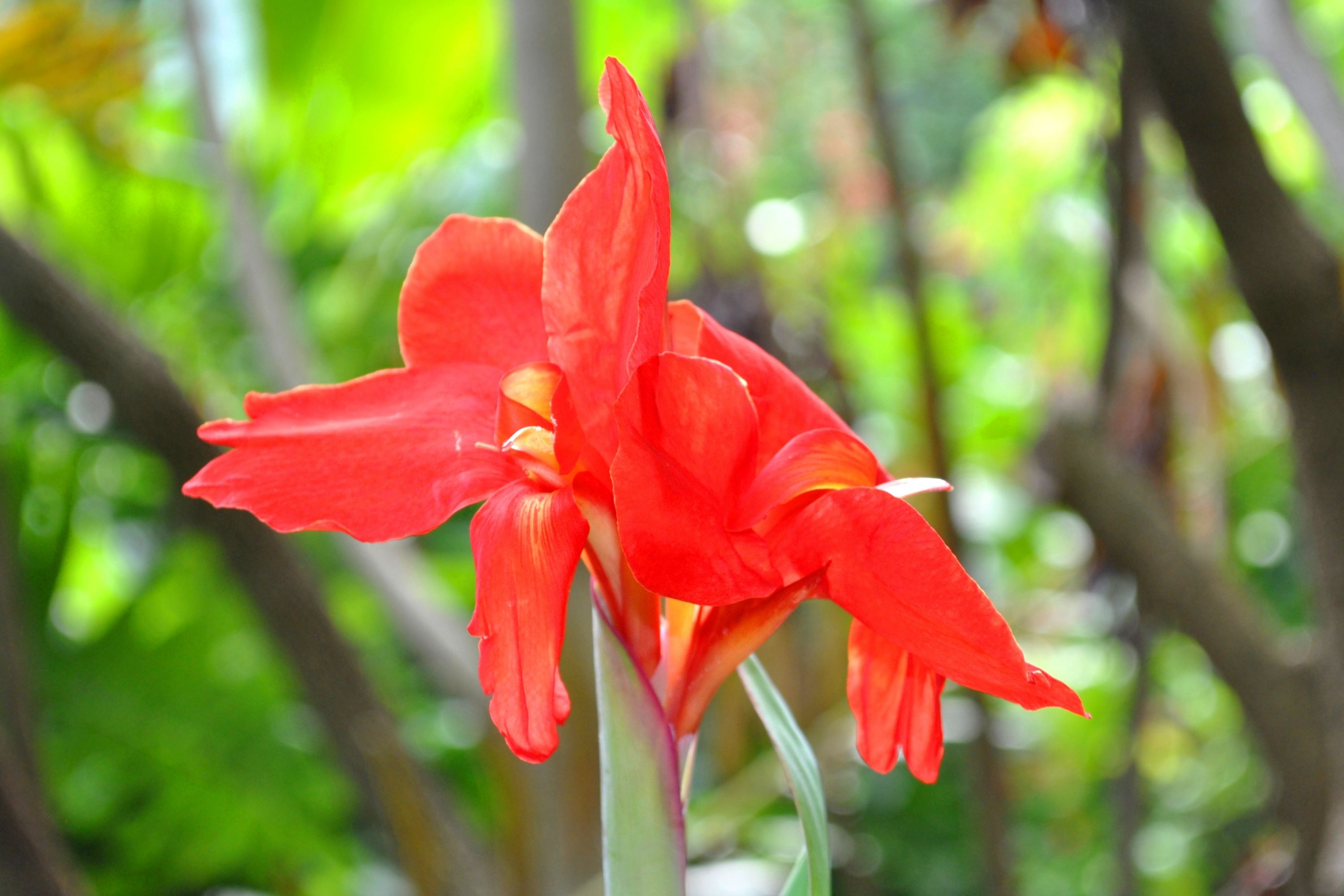Canna Lily
(Canna generalis)

Description
Canna Generalis is a species of flowering plant belonging to the Cannaceae family. It is commonly referred to as simply "Canna" or "Canna Lily". The plant is native to tropical and subtropical regions of Central and South America and is widely cultivated as an ornamental plant in gardens and parks around the world. Canna Generalis is characterized by its tall stems, large leaves, and vibrant, showy flowers. The plant can grow up to six feet tall and has leaves that are oblong or lance-shaped and can be up to two feet long. The flowers are typically red, orange, yellow, or pink, with some cultivars producing flowers that are white or variegated. History and Cultural Significance Canna Generalis has a long history of cultivation by humans for both ornamental and practical purposes. The plant was first cultivated by the Aztecs in what is now Mexico and was used for food, medicine, and religious rituals. The plant's starchy rhizomes were used as a source of food, while the leaves and stems were used to treat a variety of ailments, including fever and pain. After the Spanish conquest of the Aztec Empire, the plant was introduced to Europe and quickly became popular as an ornamental plant. In the 19th century, Canna Generalis became a symbol of the Victorian-era obsession with exotic plants, and the plant was widely cultivated in gardens throughout Europe and North America. Today, Canna Generalis remains a popular ornamental plant, valued for its striking foliage and vibrant flowers. The plant is also used in traditional medicine in some cultures, where it is believed to have anti-inflammatory and analgesic properties. Botanical Characteristics Canna Generalis is a perennial plant that grows from rhizomes, which are fleshy underground stems that store nutrients for the plant. The rhizomes produce new shoots and roots each year, allowing the plant to grow and spread over time. The plant's stems are tall and upright, and can grow up to six feet tall. The leaves are large and oblong or lance-shaped, with a prominent midrib and parallel veins. The flowers are produced on long stalks, or inflorescences, that emerge from the top of the stem. Each inflorescence can produce several flowers, which are typically red, orange, yellow, or pink. Cultivation and Care Canna Generalis is a relatively easy plant to grow, and it can be grown in a variety of conditions. The plant prefers full sun to partial shade and well-drained soil that is rich in organic matter. It can tolerate a range of soil types, including clay and sandy soils, but it prefers soil that is slightly acidic. The plant should be watered regularly during the growing season, but it should not be overwatered, as this can cause the rhizomes to rot. The plant can also benefit from regular fertilization with a balanced fertilizer. Canna Generalis can be propagated from seed or by dividing the rhizomes. Seeds should be sown in the spring, while rhizomes should be divided in the fall or early spring, before new growth begins. Dividing the rhizomes can help to control the size of the plant and prevent overcrowding. Pests and Diseases Canna Generalis is relatively resistant to pests and diseases, but it can be susceptible to some common garden pests, such as aphids and spider mites. These pests can be controlled with insecticidal soap or neem oil. The plant can also be susceptible to fungal diseases, such as leaf spot and powdery mildew. These diseases can be prevented by avoiding overwatering and providing good air circulation.
Taxonomic tree:







